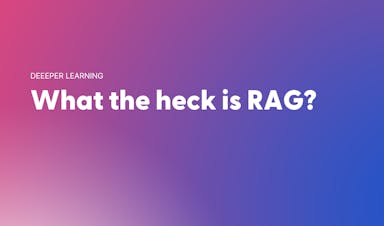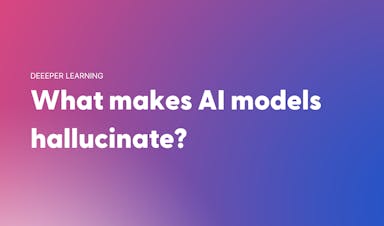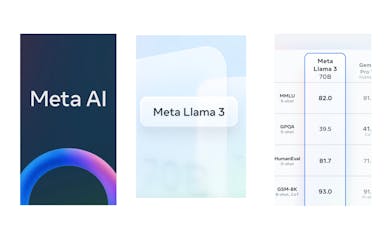Midjourney vs. Stable Diffusion vs. DALL-E: What’s best in 2023?

Generative AI is rapidly changing how businesses approach creative production. Let’s take a look at Midjourney vs. Stable Diffusion vs. DALL-E to see which AI art generator comes out on top.
First thing’s first: What is AI art? Simply put, it is artwork created with the assistance of artificial intelligence algorithms. All you have to do is describe the type of image you want to create in a text box and voilà, the AI art generator will create the image for you.
From creating fantastical characters to abstract artwork, AI art generators have captured the interest of artists, designers, and entrepreneurs around the globe. Midjourney, Stable Diffusion, and DALL-E are often touted as the best AI art generators available, and for good reason: their neural architecture and large training sets enable them to generate beautiful and contextually relevant images that are only limited by your imagination.
While Midjourney, Stable Diffusion, and DALL-E are among the best AI apps available right now, they have key differences in terms of pricing, features, and unique strengths. Without further ado, let’s dive right into said differences to help you decide which AI art generator is best for you.
What is Midjourney?

Midjourney
Midjourney is a generative AI tool that excels in generating contextually relevant images based on text input. Developed by a team of researchers at NASA and Apple, Midjourney employs state-of-the-art machine learning techniques to understand and respond to natural language queries with remarkable accuracy. Its underlying architecture enables it to grasp complex nuances, understand context, and produce high-quality images.
In fact, Midjourney has developed a fan base of its own due to its stunning image generation capabilities. If you are going for more of a “free-spirited artist” sort of vibe for your images, you will probably find the most utility from Midjourney.
Midjourney arguably generates the most visually appealing images compared to its competitors. The software is closed source so nobody can say for sure which LLM they have implemented, but you can take a look at the images yourself to get an idea of what to expect.
Midjourney: At a glance
Key features: Generate high-quality images in different styles, ability to upload your own images as a reference, augment and/or edit existing images, upscale images, outpainting
Best for: Photorealistic images and designs in various art styles, high quality rendering.
Cost: Subscriptions begin at $10 per month for 3.3 hours of GPU time (it takes approximately one minute of GPU time to generate one image)
Pros of Midjourney
Easy to craft highly relevant imagery
Midjourney’s biggest strength is that it can generate highly relevant images according to the lighting, style, orientation, and colors you want. In terms of pure image generation, it is probably the best generative AI tool available.
Additionally, you can upload your own images as a reference and even modify those images. For example, you can change the background of a portrait, change the color of the outfit someone is wearing, create a caricature, and more.

Prompt used: “Create a photorealistic image of a smiling 30-year-old woman dressed elegantly against the backdrop of a financial company with shades of light gray and aqua green.” (Midjourney)
Able to upscale to high resolution
Midjourney allows you to upscale images to a higher resolution than other AI art generators. DALLE-2, for instance, only generates images that are 1024 x 1024 pixels, while Midjourney can upscale to maximum resolution.
Outpainting
Midjourney's outpainting features lets you extend the boundaries of your image beyond its original size. With the Zoom Out feature, you can freely adjust the canvas of an enlarged image beyond its original proportions while preserving the image's original resolution and aspect ratio.
Cons of Midjourney
Requires a paid subscription
Midjourney has no free version, at least at the moment. If you want to experiment with the platform you should be prepared to shell out some dough.
Difficult to access
The art generator operates entirely through a Discord server vs. having a dedicated website or platform. This could be problematic if you want your image generations to be private, since everyone else on the Discord server is able to see what you are creating.
All images are public property
Midjourney’s terms state that all images you generate are public property, which means that someone else can potentially re-use your image and there’s nothing you can do about it.
What is Stable Diffusion?

Stable Diffusion
Stable Diffusion is an open-source image generation AI. It has been built using a latent diffusion model (LDM.)
In layman’s terms, it starts out with a random noise, similar to an analog television screen's static. It then removes parts of the noise from the image until it matches the text prompt. How is it able to do this? Well, it was trained by adding noise to a giant dataset (i.e. images extracted from websites such as Instagram and Pinterest) so it is just reversing the process.
Stable Diffusion’s open-source nature makes it the most customizable AI image generator, allowing for maximum control. If you are a tech geek who wants to feed the AI your own unique dataset (such as your toddler’s drawings, for example) you can do so.
Another key feature of Stable Diffusion is that there are no restrictions on the prompts you can input. In contrast, other AI art generators have strict censorship rules.
While the online version is far less impressive, Stable Diffusion is at its best when downloaded and configured according to your requirements.
Stable Diffusion: At a glance
Key features: Text to image generation, wide range of presets, add-on configurations for resolution upscaling, no restrictions on text input
Best for: Inpainting, outpainting, custom model implementation, offline-use
Cost: Free if you download the source code
Pros of Stable Diffusion
Can be accessed offline
Stable Diffusion has a few unique capabilities not found in other generative AI tools. For one, it is accessible offline since it can be downloaded, which is a handy feature.
Inpainting
Stable Diffusion also allows users to alter the size of elements or replace them, which is known as “inpainting.” You have the option to use your own data set to further train the AI.

Stable Diffusion Art
Free access
Finally, Stable Diffusion is open-source and available for free. This is a big advantage if you’re just trying to create a few images and don’t want to invest in a paid subscription.
Cons of Stable Diffusion
Steep learning curve
Stable Diffusion is computationally intensive and has a steeper learning curve compared to other AI tools, so if you’re an amateur designer or just experimenting, you are unlikely to get the most out of Stable Diffusion.
If you're looking for a more accessible platform, however, you could try Stable Diffusion DreamStudio instead which features an easy-to-use interface that doesn't require much prompt engineering experience.
Can requires high PC specs
The biggest drawback of Stable Diffusion is that it requires high specs on your PC if you plan to use it effectively. They do have an online version, but it requires a paid subscription.
What is DALL-E?

Dall-E
Developed by OpenAI, DALL-E is a neural network that allows users to create images based on text input, similar to other AI art generators. The name “DALL-E” is an homage to Salvador Dali and Wall-E, a clever combination of art and technology.
DALL-E was the first AI-powered text to image generator to hit the market. The platform uses GPT-3 to understand the prompt and refine the image till a relevant image is created. Most interestingly, it is able to create the same image in different styles. Whether you want your image to look like an oil painting, a 3D render, or a pencil drawing, you can enter that information and DALL-E will take care of the rest.
DALL-E: At a glance
Key features: Text to image generation, image to image generation, editing and extending images, text in images, uploading reference photos to augment image generation.
Best for: Outpainting, generating images in different art styles, quick renders.
Cost: Credit-based usage. Free for up to 50 generations for the first month, 15 free generations per month thereafter. $15 for 115 additional credits.
Pros of DALL-E
Great for beginners
DALL-E is beginner friendly and very easy to use. The platform also has an impressive outpainting feature, where you can extend images or even add elements to them.
Can emulate artist styles
You also have the ability to emulate different artists painting styles on DALL-E. For example, you could generate an image of a sunset in a surrealist, impressionist, oil painting, or anime manga style as per your choosing.
Additionally, you can further iterate on the generations to refine your creations.
Cons of DALL-E
Requires lots of descriptive prompts to tweak the image
Generating nuanced images with lots of details require very descriptive prompts, and you are likely to spend multiple credits getting the type of image you desire if it isn’t something generic.
Struggles with human faces
DALL-E also struggles with generating human faces, so it isn’t as great at photorealism when compared to Midjourney.

Prompt used: “Create a photorealistic image of a smiling 30-year-old woman dressed elegantly against the backdrop of a financial company with shades of light gray and aqua green.” (Dall-e)
Is Midjourney based on Stable Diffusion?
The creators of Midjourney do not provide any information on what training models they use. As it is proprietary software, they have not revealed the source code to the public, so it is impossible to say for sure. According to Techspot, Midjourney was trained on their own AI supercluster.
The changes made to Midjourney’s V5.2 model has led to generation of images that appear somewhat similar to those generated from Stable Diffusion V2. This has caused speculation that Midjourney may be using a different version of the latent diffusion model that powers Stable Diffusion.
Midjourney vs Stable Diffusion vs DALL-E: Which is better?
Midjourney is hands down the best AI art generator based on image quality alone. It is relatively simple to use, produces high-resolution images, and if you are an entrepreneur it has a low barrier to entry.
Sure, Stable Diffusion can be used for free, but you get your money’s worth with Midjourney. There are situations where you may find Stable Diffusion to be optimal, specifically, if you have your own unique dataset you want to train it on. Don’t expect the same quality of results as Midjourney if you use the online version, but the software packs a punch if you configure it with the right models.
DALL-E is ideal for beginners thanks to its easy-to-use interface, just be prepared to add descriptive prompts to get the exact result you want, which requires credits.
Comments (6)
Michael Eatonn@michael_eatonn
What fundamental principles of space agencies are actively implemented in the framework of ambitious goals, Former NASA Director, Michael Griffin, Criticizes The Artemis Project? These plans are to be subject to top specialists taking part in such well-known projects.
Share
I personally haven't used Midjourney but have worked extensively for the others. But now that I read this article and saw the images you can generate, will try it out!
Yeah i'm going to be using these a looot for my ads agency!
Midjourney's operation is a bit complicated, but the quality of the generated images is undoubtedly the best. DALL-E and Stable Diffusion require high-end computer configurations. In addition to these, I think there are also some great tools for generating specific images. See the list ➡️ https://kostja-ai-studio.notion....
The comparison between MidJourney, Stable Diffusion, and DALL-E offers an intriguing exploration of these innovative technologies. It's fascinating to witness the advancements in AI and how they're applied in different contexts. Speaking of advancements, I've been navigating the world of academics and recently discovered a valuable resource that highlights homework websites for students. I am sure that is is a helpful tool in their academic journey.
More stories

Aaron O'Leary · News · 4 min read
Q&A: What the heck is RAG?

Sarah Wright · News · 3 min read
Q&A: What makes AI models hallucinate?

Kyle Corbitt · How To · 3 min read
What we've learned in 3 days of Llama 3

Aaron O'Leary · Announcements · 2 min read
Introducing Shoutouts

Finn Lobsien · Opinions · 5 min read
Can Devin AI Replace Product Managers?

